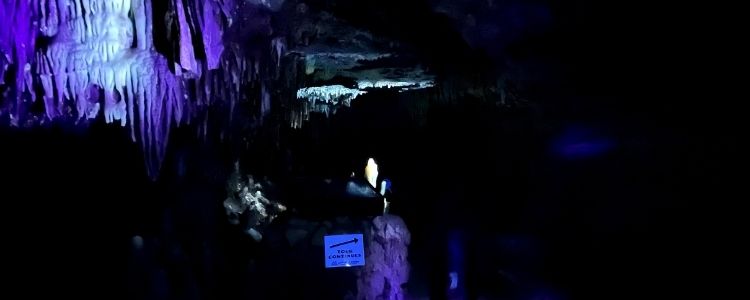Cave of the Mounds has calcite formations and we demonstrate its fluorescence AND phosphorescence every day. However, the formations do not glow because they are made of the mineral calcite. Calcite may or may not fluoresce. The easiest way to explain this process is to first discuss the make-up of calcite. All minerals are made up of elements. When a mineral forms, there are usually impurities present which may or may not be in the normal molecular structure of the mineral. Pure calcite does not exist in nature. In a lab, all impurities may be blocked and pure calcite can be created, but nature does not work that way. The impurities present in the environment where calcite forms play an important role in whether or not the calcite will fluoresce. Calcite, pure CaCO3, does not have an excited state and therefore would not fluoresce all by itself. Impurities sometimes serve as activator elements for photoluminescence. The activator element manganese (Mn+2) in the matrix of our calcite causes the fluorescence that is witnessed as the afterglow on the wall beside the Surprise Cave.

